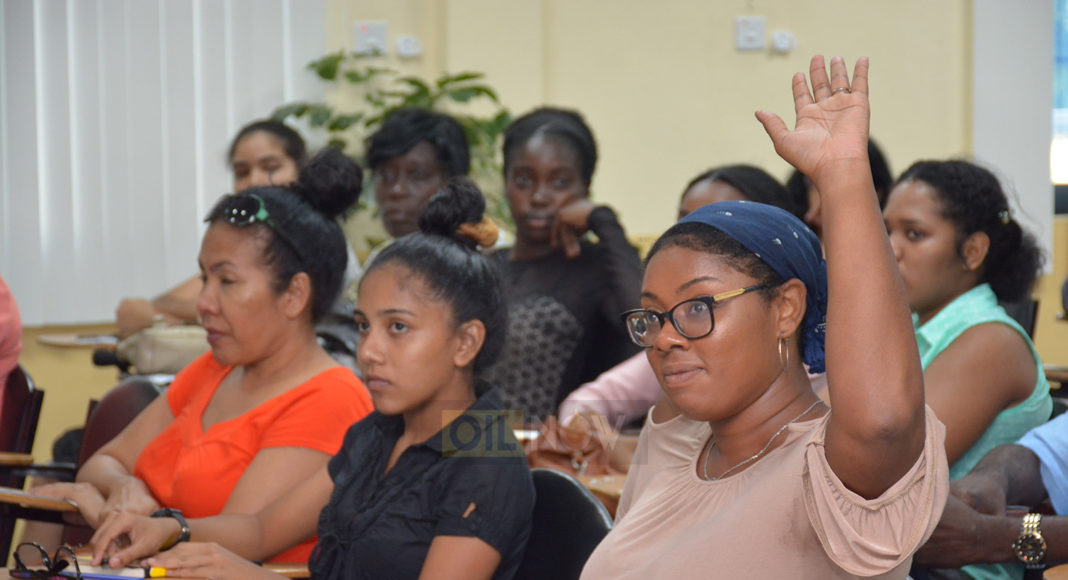By Terrence R. Blackman, Ph.D. – OilNOW
The recent 2020 Guyana Labor Force Survey (GLFS) highlights major interest indicators in Guyana’s labor force participation. In the first quarter of 2020, the total population aged fifteen (15) and above residing in Guyana was 602,765 persons. This population is comparable to American cities like Boston, Massachusetts, El Paso, Texas, and Nashville, Tennessee. A little more than 70% of the Guyanese population lives in rural areas, and women slightly outnumber men. However, if we look at the labor force, men represent 60% of the workforce actively engaged.
Geography, young people, and women are critical variables in Guyana’s workforce development equation.
Underemployed workers are close to 4%, and the unemployment rate was 12.8 percent in the first quarter of 2020. The rural unemployed population represented the vast majority of the total unemployed for the first quarter of 2020. The unemployment rate for women appears to be higher than that for men. The youth unemployment rate for the first quarter of 2020 was 30.2%.
The majority of the Guyanese working population work in three sectors, namely: (i) Agriculture, forestry, and fishing; (ii) Wholesale and retail trade; and (iii) Public administration and defense.
Preparing a qualified workforce is the essential function of Guyana’s educational system. Tomorrow’s careers, particularly those in the emerging Oil and Gas sector, will require advanced skills and more flexibility than ever. Guyana’s workforce development policies must facilitate industry-driven training and educational programs focused on providing Guyanese youth, Guyanese women, and the Guyanese in rural areas preparation for Guyanese jobs.
We reiterate that the majority of Guyanese employment are in the:
- Agriculture, forestry, and fishing sector.
- Wholesale and retail trade sector.
- Public administration and defense sector.
As such we advocate that Guyana adopt the following three-tier approach for meeting her workforce needs:
1) Amplify and refine existing Secondary School programs that connect youth with career pathways and help them prepare for the academic and other rigors that lead to workforce participation;
2) Develop Academic certificate and degree programs that prepare students, with particular emphasis on women, for careers in critical Guyanese employment sectors; and
3) Prioritize professional development courses that provide continuing education targeted at rural youth and women.
We must be purposeful as we identify workforce development priorities through labor market information, institutional data, and industry feedback to support and develop programs countrywide.
To this end it is useful to consider, a la Alaska, the establishment of a Ministry of Employment and Training Services (METS) which would work with business and industry, particularly the emerging Oil and Gas sector, to build a trained and prepared workforce by providing employment and training services to Guyanese and Guyanese businesses, thereby advancing opportunities for employment and economic stability for communities in Guyana.
A Ministry of Employment and Training Services (METS) would, for example, operate a country wide online labor exchange system that would connect job seekers and employers in each of the ten (10) regions. It would oversee and administer job centers across the country to assist job seekers with employment related services. It would support employers by providing outreach and recruitment services and providing information on pathways to employment for the general public. Such a ministry could provide the specialized initiatives aimed at integrating women, rural youth, indigenous populations, into the economic mainstream of Guyana. Such a ministry would be charged with developing approaches flexible enough to respond to emerging industries, identify solutions for workforce issues on an ongoing basis, and meet the needs of employers, communities, and the nation.
The recently promulgated draft of Guyana’s Local Content Policy for the development of Guyana’s petroleum economy provides a framework for managing Guyana’s petroleum resources. Its goal is to enhance the local workforce, make vital local contributions to the oil and gas sector supply chains, and create a business environment for transforming the economy and well-being of Guyanese. Simultaneously, ExxonMobil’s Guyana workforce development strategy aims to recruit and develop Guyanese personnel who can play a role in their local operations, and support their business needs wherever they operate. This confluence of events is a once-in-a-lifetime opportunity that Guyana and Guyanese cannot afford to miss.
How do we ensure success?
While the stated policy does not prescribe quantitative ratios or percentages of required employment of local persons and the use of Guyanese Suppliers, the policy does require the submission of a “Local Content Plan” by the Operators which adheres to some broad quantitative guidelines. For example, the industry’s highly technical parts, such as front-end engineering and geophysical services, have a 90% local content requirement within ten years of the licensing agreement. We caution that these jobs are incredibly sophisticated and are hard to fill with people of any nationality. In order to ensure that Guyana reaches these thresholds, we will have to invest heavily in developing an oil and gas technical training infrastructure. Guyana will not create a training infrastructure with the desired capacity over a single election cycle. The government has already admitted that many of the targets are a bit unrealistic (i.e., 30 percent Guyanese-made steel and seismic analysis starting next year etc.) and will be revised to reflect Guyana’s actual circumstances. It is also worth noting some of the risks of resource shifting that poorly articulated targets can have—with a situation of limited human capital, having targets that pull all the business/human resources towards oil will hurt other industries as has been the case of resource-rich developing nations
As such, it will require intent and coordination at the highest levels of government and education. It is precisely why this essay suggests the establishment of METS.
I close by offering some principles that should guide the policy conversations around Guyana’s workforce development priorities:
- We must take a look in the mirror. The initial conditions matter, and we must document and disseminate, with clarity and precision, what we have inherited.
- We must articulate a clear vision of a 21st-century Guyanese economy and supporting workforce.
- Any program of activity must target high value-added activity–this is our competitive advantage. In this regard, one salient concern raised relating to the local content policy, as it stands, is that it spreads our very small, relatively speaking, workforce very thinly (across 114 employment categories at last count).
The sugar industry’s decline provides us a negative example of the necessity for diversifying, innovating, and moving up the food chain. We would do well not to elide its example.
About the Author
 Dr. Terrence Richard Blackman is a member of the Guyanese diaspora. He is an associate professor of mathematics, and a founding member of the Undergraduate Program in Mathematics at Medgar Evers College. He is a former Dr. Martin Luther King Jr. Visiting Professor at MIT and a Member of The School of Mathematics at The Institute for Advanced Study. He previously served as Chair of the Mathematics Department and Dean of the School of Science Health and Technology at Medgar Evers College, where he has worked for more than twenty-five years. He’s a graduate of Queen’s College, Guyana, Brooklyn College, CUNY, and the City University of New York Graduate School.
Dr. Terrence Richard Blackman is a member of the Guyanese diaspora. He is an associate professor of mathematics, and a founding member of the Undergraduate Program in Mathematics at Medgar Evers College. He is a former Dr. Martin Luther King Jr. Visiting Professor at MIT and a Member of The School of Mathematics at The Institute for Advanced Study. He previously served as Chair of the Mathematics Department and Dean of the School of Science Health and Technology at Medgar Evers College, where he has worked for more than twenty-five years. He’s a graduate of Queen’s College, Guyana, Brooklyn College, CUNY, and the City University of New York Graduate School.




